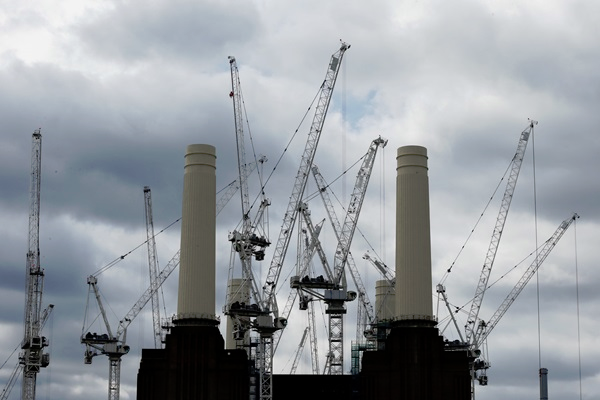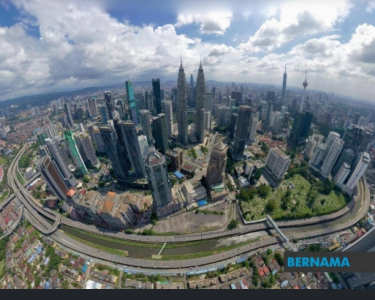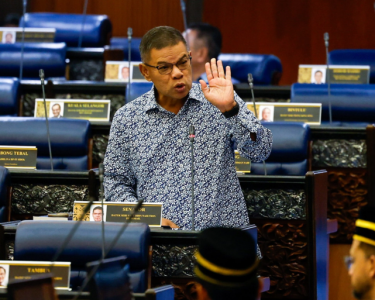LONDON, July 21 (NNN-Bernama) — The Battersea Power Station is one of the symbols of London’s modernisation, complete with rich historical elements that live in the nostalgic heart of every proud Londoner.
The redevelopment of the building and its surrounding area into a mixed-development property has not been an easy task due to its designation as a Grade II* listed building, which means that it could not be demolished, extended or altered without special permission from the local planning authority.
The building is maintained by Historic England, an executive non-departmental public body of the British government.
Battersea, Malaysia and its History
The building comprises two power stations, Battersea A and Battersea B. Battersea A was decommissioned in 1975, followed by Battersea B in 1983.
After more than three decades had passed and various attempts to redevelop the building left it in near ruins, a Malaysian consortium, Battersea Project Holding Company Ltd (BPHC), had won the bid for the redevelopment of the 42-hectare site while maintaining the facade of the power station.
BPHC is jointly owned by Sime Darby Property Bhd (40 per cent), SP Setia Bhd (40 per cent) and the Malaysian pension fund, Employees Provident Fund (EPF) (20 per cent).
Last year, the EPF and government-linked investment company, Permodalan Nasional Bhd had purchased the commercial assets of Phase Two of the Battersea Power Station at 1.58 billion British Pound (1 British Pound = RM5.14).
“It is not just about the buildings. It is about the history and the people. The power had been out at the Battersea Power Station until Malaysia’s conglomerate came in, bringing life to the historical and iconic area,” said Simon Murphy, chief executive officer of the Battersea Power Station Development Co (BPSDC).
Speaking to Bernama in an interview in London, he said that there has been some challenges in restoring the Battersea Power Station, adding that they aim to bring it back to its glory days.
Well-known for its unique red bricks architecture, the Battersea power station façade will be restored to its original structure using the very same bricks used to build it.
Historical to Modern Times
When it began its operations in 1933, the Battersea Power Station had used coal to generate power, which sparked protests from those who felt that the resulting pollution would damage the local buildings and the parks in the area.
Today, it is a pristine area, overseeing the River Thames and surrounded by the luscious greens of the 161-year old Battersea Park.
The Battersea Power Station mixed-development project consists of retail, offices and residential units, to be complemented by the all-new Zone 1 London Underground station on the Northern Line and the Thames Clippers River Bus.
The building will feature a glass chimney lift, which will offer visitors a 360-degree view of London’s skyline.
By 2021, the area is set to become one of London’s top destinations and attract about 40 million people per annum, hence boosting commercial activities in the area.
Investor’s confidence
Due to Brexit and the global economic slowdown, institutional investors in Malaysia have voiced their concerns on the outcome of the Battersea project.
Murphy said the project’s foundation and outlook remain solid despite reports of cost overruns and delays.
“There have been reports of concerns about the project’s future with Brexit and the cost of construction, but let me reassure the shareholders back in Malaysia that there is nothing to worry about,” he said.
The take-up rate for its commercial space has been 100 per cent as it has been leased to Apple Inc and other global companies as well as coworking space operators.
There has also been a huge demand and interest in its retail and leisure units.
As for its residential units, Murphy said the company had sold 99 per cent of the units in Phase One, 90 per cent of the units in Phase Two and 70 per cent of the units in Phase 3A, which is also known as the Electric Boulevard.
Phase 3A, a mixed development that will be connected to the tube line, will have the biggest roof garden in London.
“We have a number of buyers and potential buyers from Southeast Asia and the Middle East, backed by strong local demand.
“For those who are willing to look past the macro economy, we can see that real estate prices outperform on this site,” Murphy said.
In the last 12 months, residential sales stood at 120 million British Pound, and the combined gross development value for all the eight phases is 9 billion British Pound.
Malaysian Square: A Symbol of Strong Relationship
To commemorate the strong relationship between United Kingdom (UK) and Malaysia, Phase Three of the Battersea Power Station development will feature the 5,000 sq ft Malaysian Square, comprising a public square, an area dedicated to performances and food outlets selling Malaysian delicacies.
It will also include a boutique hotel that will complement the overall ecosystem of Battersea for future visitors.
“The Malaysian Square is also a testament to the strong bilateral relationship between the countries,” said Murphy.
Prime Minister, Tun Dr Mahathir Mohamad said that the UK and Malaysia have enjoyed a strong and enduring relationship, with many shared interests such as advancing prosperity, security and mutual values.
The relationship between both countries have never been stronger, and this project is a testament that the Malaysian flag will keep flying high, with the phrase “Malaysia Boleh”, backed by the country’s solid relationship with its allies.
NNN– BERNAMA






